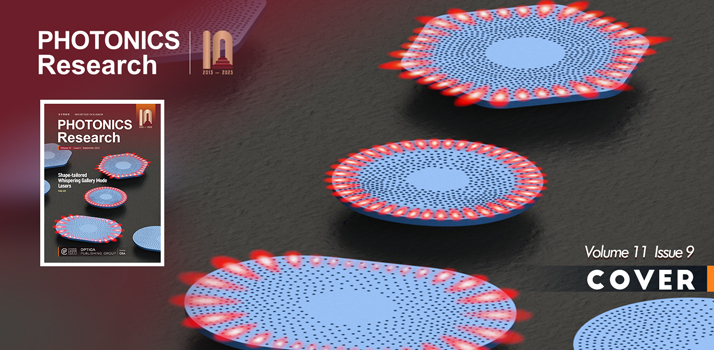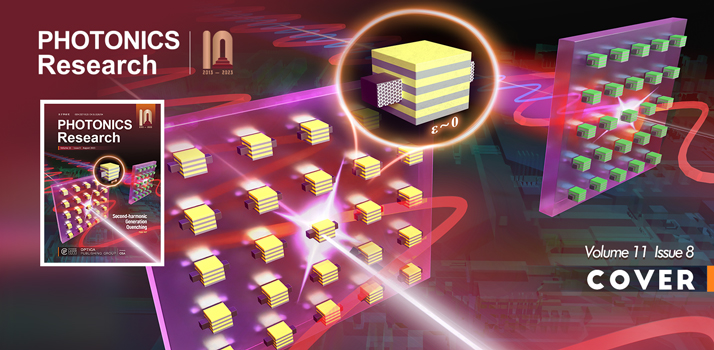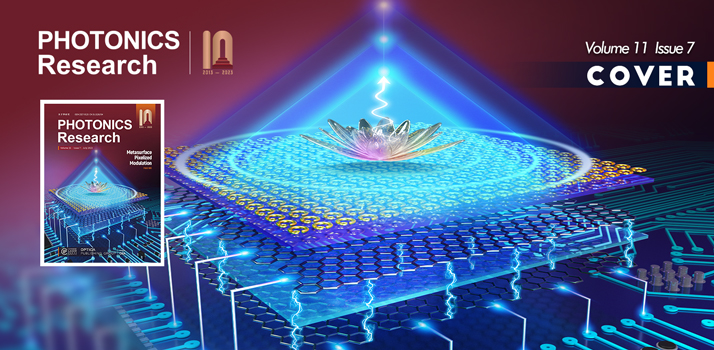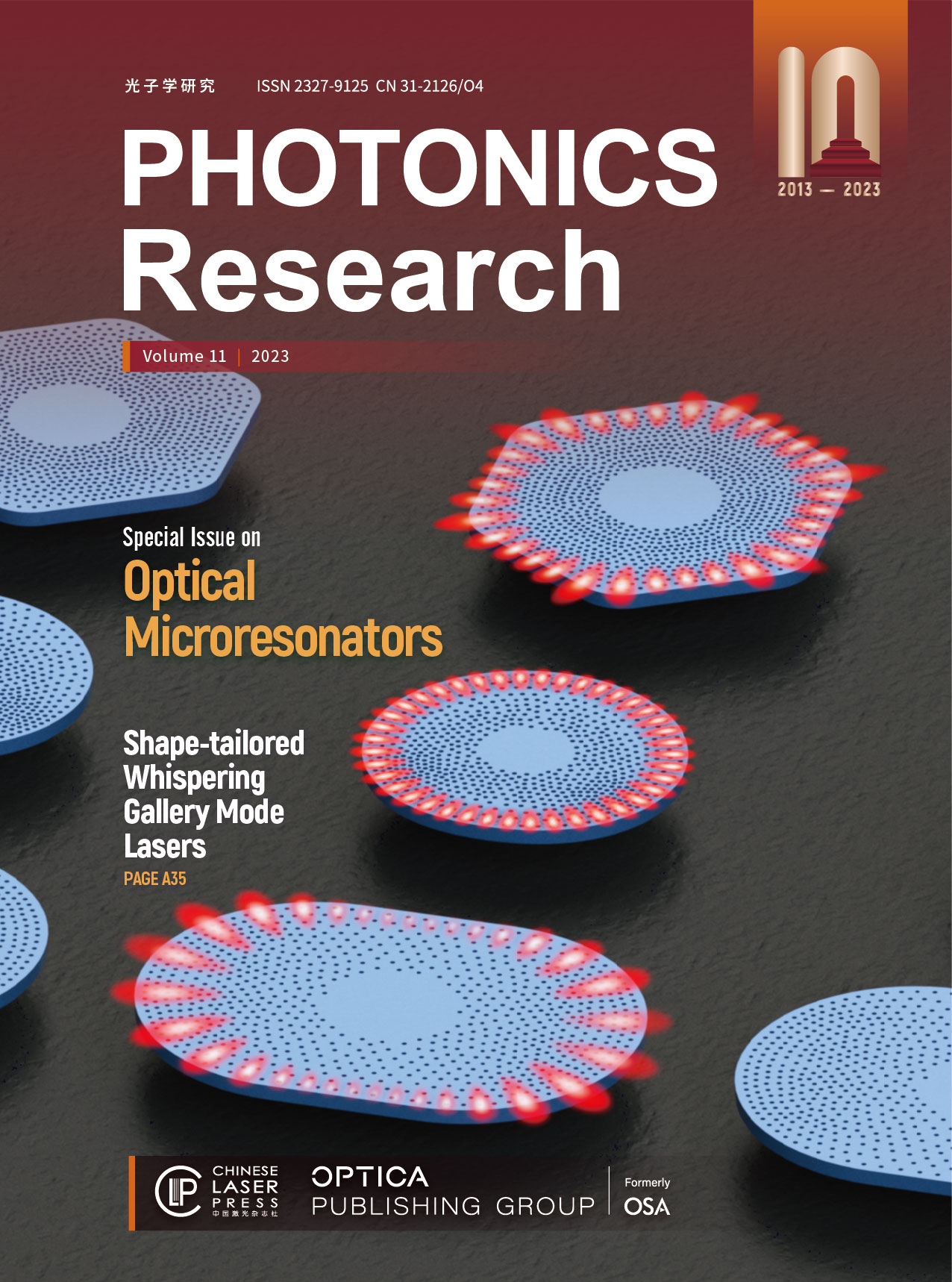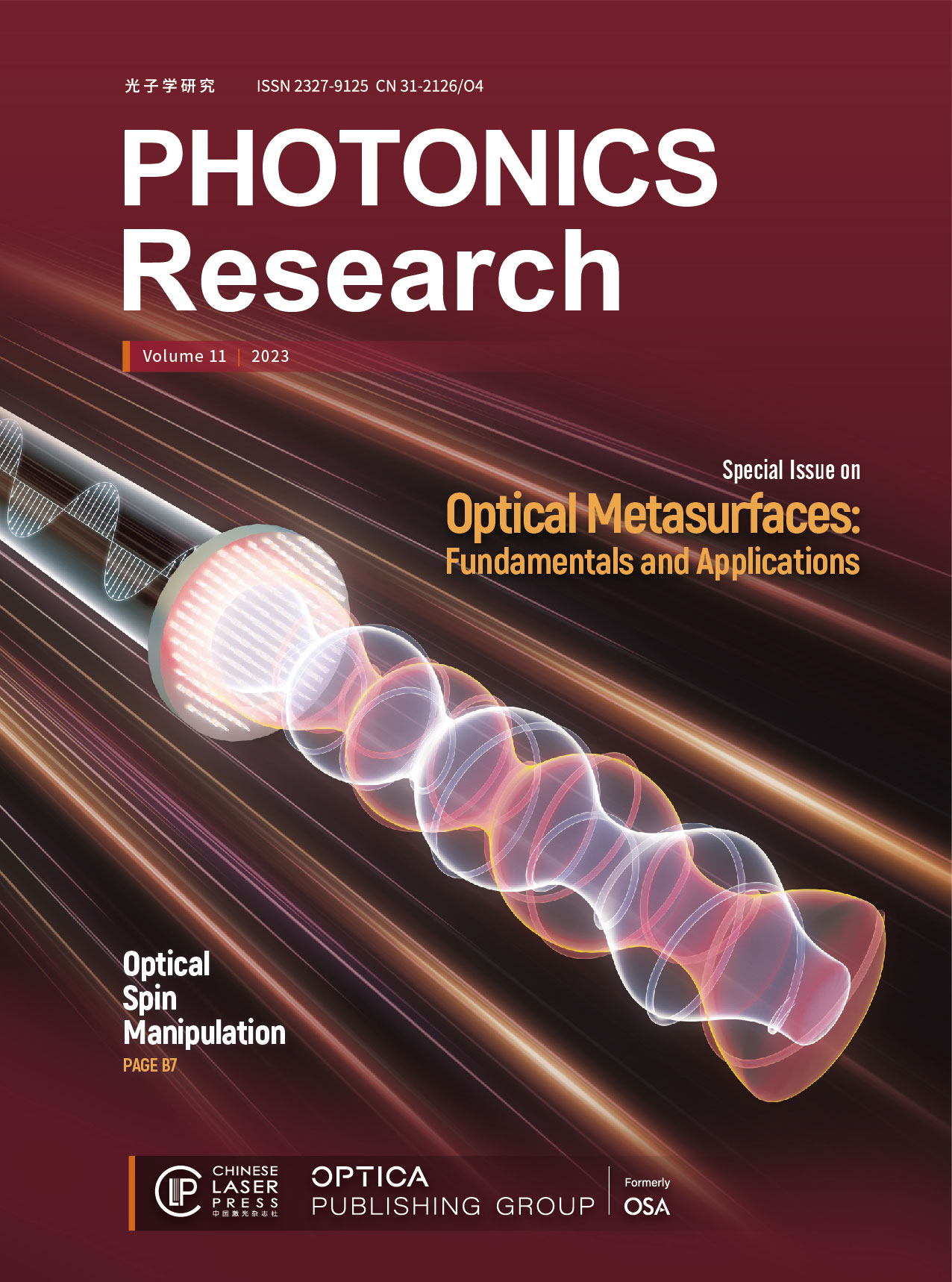Search by keywords or author

Advancing Integrated Photonics: From Device Innovation to System Integration
Bitao Shen, Xuguang Zhang, Yimeng Wang, Zihan Tao, Haowen Shu, Huajin Chang, Wencan Li, Yan Zhou, Zhangfeng Ge, Ruixuan Chen, Bowen Bai, Lin Chang, and Xingjun Wang
Photonics Research
- May. 07, 2024
- Vol. 12, Issue 5 (2024)
Instrumentation and Measurements
Liang Xu, Kun Wang, Chen Liu, Wenying Chen, Chi Zhang, and Xinliang Zhang
Photonics Research
- May. 07, 2024
- Vol. 12, Issue 6 (2024)
Holography, Gratings, and Diffraction
Rafał Kukołowicz, Izabela Gerej, and Tomasz Kozacki
Photonics Research
- May. 07, 2024
- Vol. 12, Issue 5 (2024)
Instrumentation and Measurements
Ke Tian, Weifeng Ding, and Zhaoying Wang
Photonics Research
- May. 07, 2024
- Vol. 12, Issue 5 (2024)
Nanophotonics and Photonic Crystals
Rodrigo Martín-Hernández, Lorenz Grünewald, Luis Sánchez-Tejerina, Luis Plaja, Enrique Conejero Jarque, Carlos Hernández-García, and Sebastian Mai
Photonics Research
- May. 07, 2024
- Vol. 12, Issue 5 (2024)
Editors' Picks
Metasurfaces, as ultra-thin two-dimensional structures with subwavelength patterns, can flexibly control optical parameters such as beam phase, amplitude, and polarization, shaping the light wavefront ideally. Through the development of various miniaturized functional components, metasurfaces have been successfully applied in fields such as optical stealth, holographic display, and image recognition. Among them, metasurface holography technology has demonstrated significant potential in optical encryption, 3D display, augmented reality, and virtual reality due to its advantages of high resolution, wide field of view, and miniaturization.
Photonics Research
- Apr. 28, 2024
- Vol. 12, Issue 2 (2024)
On the Cover
As a basic property of photons, polarization state (SOP) has been widely used in communication, optical coherence tomography, medical diagnosis, remote detection, material analysis and other fields. The polarization controller is the key element in the polarization applications, which can be realized by rotating wave plate and birefringence effect, but the traditional discrete optical components have some problems such as great volume, slow speed and poor reconfigurability. This cover article presents a novel polarization controller on the silicon substrate, which is ultra-compact, large tolerance and easy to regulate. The basic principle is that the horizontal and vertical polarization components of light waves can be converted into each other by using the mode hybrid effect of ridged silicon optical waveguide. By using MZI structure and phase shifter, the energy ratio and phase difference of two polarization components can be controlled, and the conversion between arbitrary polarization states can be realized. Due to the perfect symmetry of its structure, this work has obtained the highest range of polarization extinction ratio (PER) reported so far, and has wide application prospects in related fields.
Photonics Research
- Apr. 25, 2024
- Vol. 12, Issue 2 (2024)
Spotlight on Optics
Polarimetric imaging, as a novel optical imaging technique, is widely used in fields such as biomedicine, object recognition, polarimetric remote sensing, and 3D imaging. In the field of biomedicine, polarimetric imaging has two unique advantages compared to traditional optical imaging: 1) By analyzing the polarization properties of light interacting with biospecimens, microscopic-level information about the composition and structure can be obtained without requiring labeling agents. For example, collagen fibers in connective tissues can alter the polarization state of light passing through them. Measuring this alteration provides information about collagen fiber orientation and density, which are associated with various diseases such as cancer and fibrosis. 2) By selectively filtering out light waves with certain polarization states, it is possible to enhance image contrast and improve the visibility of certain structures or components based on the birefringence maps.
Photonics Research
- Apr. 11, 2024
- Vol. 11, Issue 12 (2024)
On the Cover
Ideal optical imaging relies upon the high-quality focusing of excitation light and accurate detection of the emission light from the fluorescent sample. However, both the optics in the microscope and the biological samples being investigated can introduce aberrations, thus causing degradation in resolution, loss of fluorescent photons, and deterioration of signal-to-background-ratio (SBR), etc. Moreover, microscopes with high numerical apertures (NA), especially the super-resolution microscopy, are more sensitive to aberrations, because the high-NA objectives are more susceptible to high-order aberrations. To detect and correct these optical aberrations, a large number of adaptive optics (AO) technologies have been explored in the last two decades. Conventional AO leverages specific devices, such as the Shack-Hartmann wavefront sensor to measure and correct optical aberrations, then utilized wavefront corrective devices such as spatial light modulators (SLMs) to compensate for the measured aberrations by reshaping the wavefronts. However, conventional AO complicates the optics, imaging procedures, and computation, resulting in many limitations in the actual imaging process.
Photonics Research
- Mar. 29, 2024
- Vol. 13, Issue 3 (2024)
Top Downloads
- Photonics Research
- Vol. 12, Issue 2, 183 (2024)
- Photonics Research
- Vol. 12, Issue 3, 474 (2024)
- Photonics Research
- Vol. 11, Issue 12, 2194 (2023)
- Photonics Research
- Vol. 11, Issue 10, 1703 (2023)
- Photonics Research
- Vol. 11, Issue 9, 1524 (2023)
- Photonics Research
- Vol. 11, Issue 10, A54 (2023)
Published
Editor (s):


